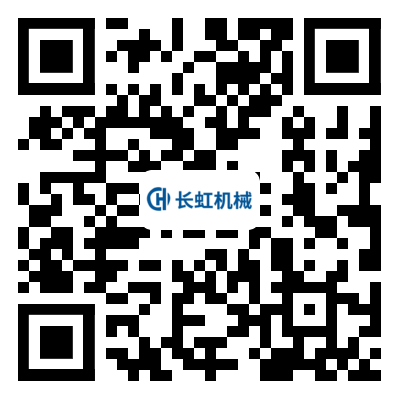1. Correct starting and starting: When the engine is started cold, due to low temperature, high oil viscosity, and poor fluidity, the oil pump may not supply enough oil. At the same time, the oil on the original cylinder wall flows down along the cylinder wall after parking, so it does not receive the same good lubrication as during normal operation at the moment of starting, resulting in greatly increased wear on the cylinder wall during starting. Therefore, when starting for the first time, the engine should be allowed to idle for a few turns until the friction surface is lubricated before starting. After starting, the engine should run at idle speed to increase the temperature. It is strictly forbidden to bang the oil port. Wait until the oil temperature reaches 40 ℃ before starting; At the beginning, you should stick to low gear and drive for a certain distance in each gear in sequence until the oil temperature is normal before switching to normal driving.
2. Proper selection of lubricating oil: It is necessary to strictly select lubricating oil with the best viscosity value according to the season and engine performance requirements. Poor quality lubricating oil should not be purchased at will, and the quantity and quality of lubricating oil should be regularly checked and maintained.
3. Strengthen the maintenance of filters: Keeping the air filter, oil filter, and fuel filter in good working condition is crucial for reducing the wear of zirconia ceramic cylinder liners. Strengthening the maintenance of the "three filters" is an important measure to prevent mechanical impurities from entering the cylinder, reduce cylinder wear, and extend the service life of the engine, especially in rural and windy areas. It is wrong for some drivers to not install air filters in order to save fuel.
4. Maintain the normal operating temperature of the engine: The normal operating temperature of the engine should be between 80-90 ℃. If the temperature is too low and good lubrication cannot be maintained, it will increase the wear of the cylinder wall. The water vapor inside the cylinder is prone to condense into water droplets, dissolve acidic gas molecules in the exhaust gas, and generate acidic substances, causing corrosion and wear of the cylinder wall. Experiments have shown that when the cylinder wall temperature drops from 90 ℃ to 50 ℃, the cylinder wear is four times that of 90 ℃. Excessive temperature can reduce the strength of the cylinder and exacerbate wear, and may even cause the piston to expand excessively, leading to "cylinder expansion" accidents.
5. Improve warranty quality: During use, promptly identify and eliminate problems, and replace or repair damaged and deformed parts at any time. When installing zirconia ceramic cylinder liners, strict inspection and assembly must be carried out according to technical requirements. In the warranty replacement operation, it is necessary to choose a piston ring with appropriate elasticity. If the elasticity is too small, gas will enter the crankcase and blow off the oil on the cylinder wall, increasing the wear of the cylinder wall; Excessive elasticity directly exacerbates the wear of the cylinder wall, or exacerbates its wear due to the damage of the oil film on the cylinder wall. The crankshaft connecting rod journal and the main journal are not parallel. The engine may deform the crankshaft due to severe impact caused by burning tiles and other reasons. If not calibrated in time and continued to be used, it will also accelerate the wear of zirconia ceramic cylinder liners.
With the continuous development of various industries, zirconia ceramic cylinder liners have gradually been widely used. So in the application process, deformation of zirconia ceramic cylinder liner is an important problem that troubles drivers. Today we will introduce several methods for detecting deformation of zirconia ceramic cylinder liners:
Zirconia ceramic cylinder should be inspected using a tester: the main pin holes and spring seats at both ends of the tester are used as positioning inspection benchmarks. Fix the instrument on two leaf spring seats, insert the inspection rod into the two main pin holes, and operate the instrument to make contact between the measuring head and the inspection rod. By using different scales, the mutual position (angle) between the main pin hole and the leaf spring seat, as well as between two leaf spring seats, can be reflected. Check and determine the location and degree of deformation. Please refer to the instrument manual for specific methods and usage steps. Place the front axle on the two V-shaped irons on the flat plate and place the level gauge on the steel plate spring seat. If the level is placed horizontally (perpendicular to the front axle) and the bubble is not in the center, it indicates that the front axle is twisted; If the bubble is not centered when the level is placed vertically, it indicates that the front axle is bent.
Use a square ruler to check the zirconia ceramic cylinder: insert the test rod into the main pin hole, place a shim on each of the two steel plate spring seats, and place a square iron on the shim. The angle of the square iron should be adjusted and fixed within the specified range of each model. Then, let the square stand upright and the edge shell occupy the test bar to find the result. If there is a gap at the upper end, it indicates that the front axle is bent downwards, and if there is a gap at the lower end, it indicates that the front axle is bent upwards. In addition, whether the front axle is bent or twisted back and forth can be determined by the alignment of the line between the square and the pad, as well as the alignment between the square and the test bar.
3. Cable inspection for zirconia ceramic cylinder: Place the front axle in a horizontal position, draw the center lines of two steel plate springs, hang a heavy hammer at both ends of the line, and thread the lines through the centers of the two main pin holes. Measure the distance between the plane of two leaf spring seats and the straight line with a ruler, and the difference between the two is the straightness of the crossbeam. Check if the centerlines of the two cable sockets are on the same straight line. Check if there is any deviation in the distance between the positioning center holes of the two seats and the straight line. If there is a deviation, it indicates that the beam is distorted. Check the distance between the inner end of the plane on the main pin hole and the straight line. If there is an error between the two distances, the angle of the main pin is incorrect. Measure the distance between two leaf spring seats and the thin wire with a ruler. If they are not equal and the centers are not on the same straight line, it indicates that the two ends of the front axle are bent up and down, or bent forward and backward.


 Service Hotline
Service Hotline